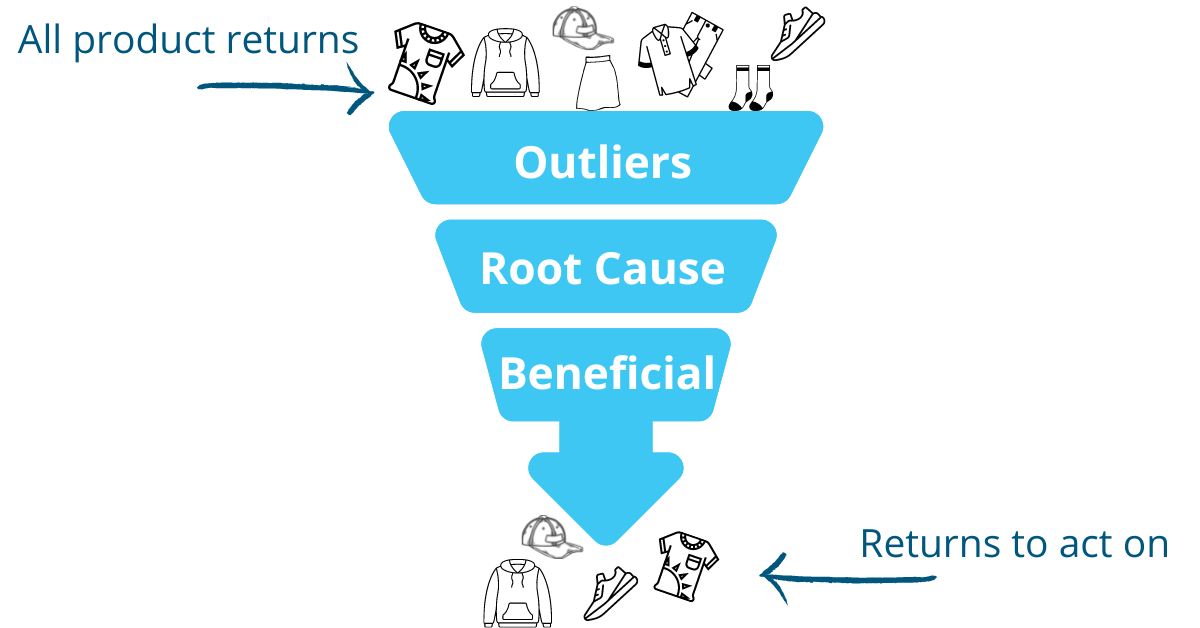To mitigate the costs, some retailers are starting to charge fees for returns, putting the responsibility directly on their shoppers for any operational issues. "Returns were just the bane of our existence." according to Emily Grayson, director of operations and chief of staff at Tuckernuck. Given that no one likes returns, why aren't retailers laser-focused on reducing them?
Of the $761 billion in returns last year, 73% were controllable by the retailer. Retailers often site size/fit for the primary return reason, but there are other reasons.
Let’s take an alternative view: Would you expect a consumer to return the product if…
- You sold a faulty product?
- You sent the wrong item?
- You misrepresented the product in pictures or descriptions?
- The product was damaged?
- The product arrived late for an event, say a Halloween decoration?
Reducing returns is of strategic importance accomplished by solving operational problems. But even retailers who want to minimize returns hesitate to believe they can. They may have developed reports, or they have what they believe to be a conglomeration of reason codes behind returns, but more is needed. In my experience, these reports barely give any insight—they provide a number. And they certainly don't offer any direction or next steps. You need a different approach.
Where to Start?
When nearly 20% of their purchases are returned, retailers need to know where to focus. Focusing on the category with the highest return rate may seem obvious, but you should focus on the most profitable opportunities.
How is that done?
 Predict Outliers
Predict Outliers
Imagine a funnel where at the top, you have all the returns. As the first step, you need to predict which items will exceed their return rate as soon as possible. Is there a particular shoe trending towards a 60% return rate while the rest of the category has a 20% return rate?
As everyone has learned in the last three years, you need AI and machine learning for accurate predictions. You can't rely on rudimentary trend analysis and reports for this.
The information will come too late to make a difference.
Discover Root Cause
Discovering the root cause is the next step. If you can't determine the reasons for the return, you can't fix it. You can't rely on consumer-entered return reason codes to make this determination, either. During the return process, consumers will select the best option that will guarantee they get their full refund. If the choices are…
- Found a better price
- Changed mind
- Damaged
…it becomes obvious which one the consumer will select if fees are attached to 2 out of 3.
Return codes can still be helpful, but other sources enrich the picture of what’s truly driving the returns. Scouring product reviews or social media can reveal many insights into why consumers return their purchases. While consumers may fib or be tight-lipped during the return process, they often open up in other areas. With Natural Language Processing, you can sift through all this information and determine why consumers returned a product. Even a 5-star review can give incredible insights into what is wrong, but that is for a future post.
Beneficial to Fix
Finally, you need to know if it is financially feasible to fix the problem. Simple questions such as, "Can it be fixed?" or "Was it caught early enough to make a difference?" or even "Is it financially viable to fix?" are valuable to ask yourself. Consider short-term and long-term impacts. For example, you can fix website descriptions or images immediately. Packaging issues might be correctable in-season, but others require a redesign, depending on the product and supply chain layout. The good news is that much of this can be systematized, thereby taking the lift off your people.
Workflow and Measurement
A tricky part of reducing returns is that several operational issues can cause customer dissatisfaction, as many returns result from a breakdown in the process. No single department can fix every problem, but every department is responsible for returns. Once you identify the root cause of a return, a prescriptive workflow can assist your teams in rectifying the problem.
And finally, measurement is paramount to highlight the impact and opportunity of decisions.
- What action did you take, and when?
- What were the results?
- What was the opportunity captured, and what was left on the table?
These measurements justify your current choices and guide future actions.
Thinking differently about returns
Take your revenue for the year and remove 20%. That's what returns do to your business. Many solution providers preach about returns, but what do they do to reduce them? Returns are a $761 billion problem; now is the time to shift from managing to fixing the problem.